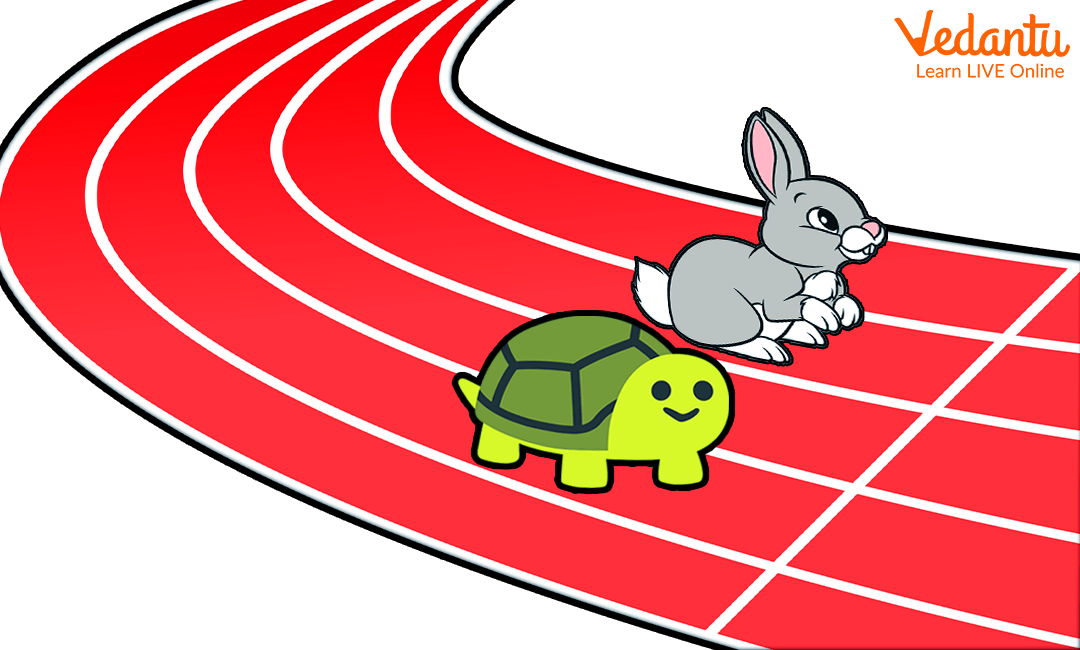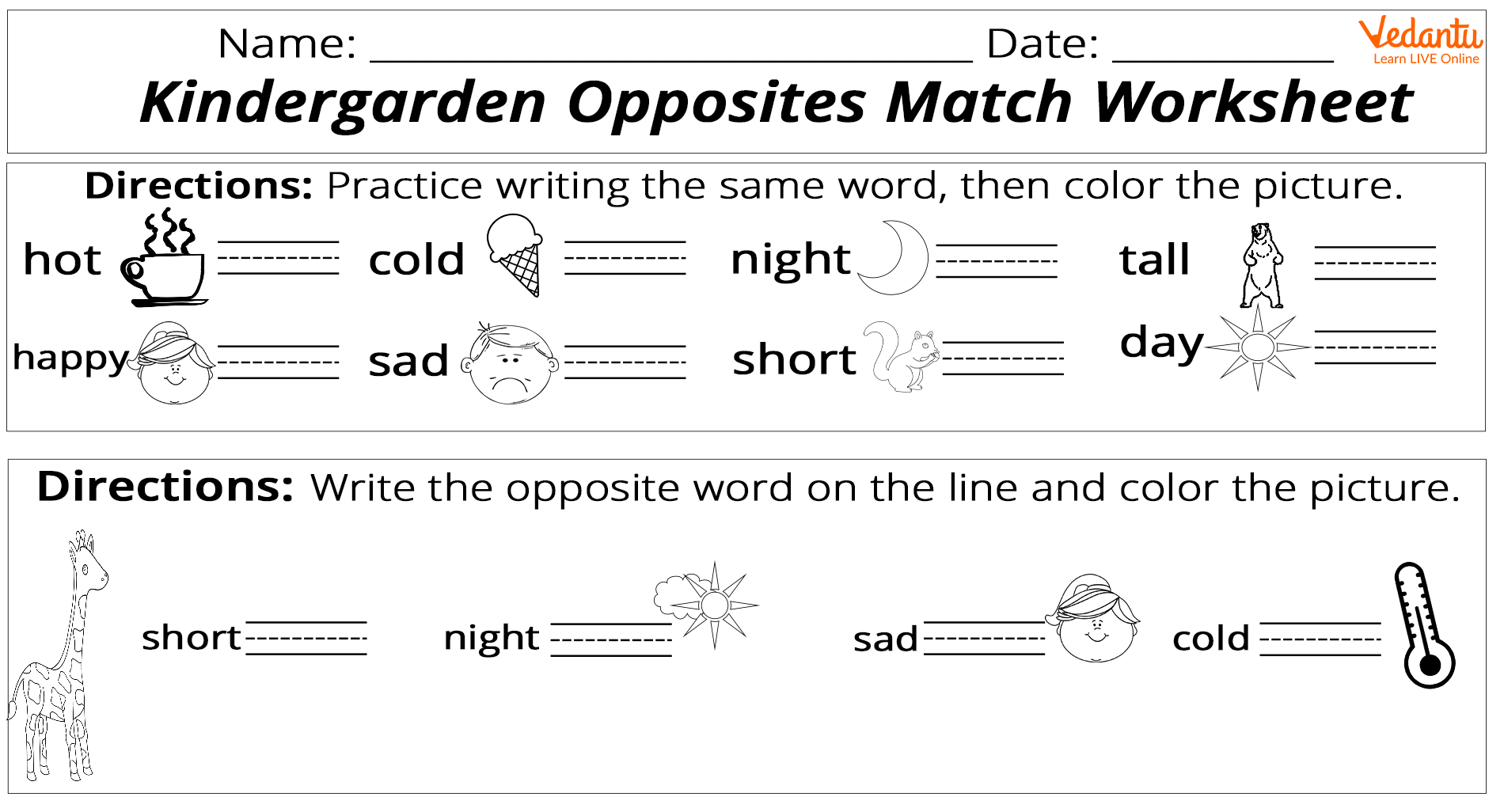




Define Opposites
Opposites are essential in schooling, but they are also essential in life. We wouldn't know the difference between "hot" and "cold" if they weren't there. We begin to understand what opposites are and why they are so crucial as kindergarteners. Now it's time to figure out how to teach opposites to kindergarten students.
Let us learn different ways of opposites activities from this article.
Understanding Opposites
When it comes to kindergarten ideas, opposites are at the top of the list. Opposites are terms that immediately contrast or are the polar opposites of one other. "Soft," for example, is the polar opposite of "hard."

The Opposite Kindergartners
Show kindergarteners a soft rabbit and a hard rock to demonstrate this. The visual and kinesthetic learning that comes from touching the two will push knowledge to new heights. You might also instruct them to stretch the sky for "high" and the floor for "low."
Here are some examples of opposites that children learn at a young age to learn this concept:
outside – inside
big – little
hot – cold
slow – fast
full – empty
over – under
clean – dirty
wet – dry
happy – sad
Activities: Opposites
Look for kindergarten activities that will help your child understand opposites. If you're a teacher seeking for new activities, you can use them as a starting point to create your own.
Make an Opposites Book
Begin with something easy! To design a book for a child, you don't need to be particularly inventive. Laminating pages, on the other hand, serves to make them more durable. Simply follow these steps to make a book:
Make a list of basic words that are the polar opposites of each other.
Fold numerous sheets of paper into fourths by folding them horizontally in half and then vertically.
To make four pages, cut along the folded lines.
Make sure your youngster writes one word on each sheet so that the opposites are facing each other.
Make a picture that corresponds to the opposite words.
Allow your kids to build a cover by stapling the pages together (before stapling, laminating).
Premade books, books that can be printed online, and books that your pupils can colour are all useful resources. This is a wonderful addition to a child's or kindergartener's bookshelf, and it also helps in their learning.
Use Printable Worksheets
Printable worksheets are a terrific method to encourage students to learn in a different way. You could, for example, utilise visuals and phrases to emphasise the meaning of opposing words. For example, consider the below worksheet.

A Worksheet
Make a Funny Story
Most children believe that if they are not having fun, they are not learning. They remember significantly more knowledge if they are learning while having fun. Try this activity to make learning more enjoyable:
Consider a funny and interesting narrative full of contrasts that kindergarteners will like.
They could raise their hands or cry out the opposites every time they hear opposing terms.
Those who know how to write the words could also write them down.
You might even have them do it in pairs, so they can practise writing and spelling opposite words together.
Exercise to Opposites
Children enjoy exercising, therefore, when it comes to opposites and exercising, it can be a lot of fun while also teaching them something new. Begin with the basics. Make them stand up and issue a few commands, such as:
Allow them to lift their leg HIGH and then lower it LOW.
Make them take a SMALL step first, then a BIG step.
Make them act as if it's HOT and then as if it's COLD.
Make them go quickly, then slowly.
Try with a variety of opposites and see what you can come up with. This will let kids see the opposites while having a good time.
How Opposites Help Children Learn?
Through contrast, children can learn how to describe distinct things using opposites. For kindergarteners, this is critical to acquiring and processing language.
You can engage your child or classmates in a variety of activities to help them learn about opposites. With the internet at your fingertips, you can always find a free program, watch movies, or read articles that show you how to come up with your own opposites for kindergarten activities. Try basic sight words for kindergarteners to make reading more fun.
FAQs on Kindergarten Opposites Activities: Fun Learning Games
1. What is the best way to introduce opposites to preschoolers?
Present the opposites in pairs. Use images, magnets, or real-world things to depict the concepts. Teach the definition of each term and how the notion connects the two opposite words; for example, in/out (space), early/late (time), wet/dry (condition), happy/sad (feeling) (emotion), etc.
2. Give some fun class activities to be performed by the children?
A few of the fun activities that are most liked by the children include the following:
Charades activity – In this charades game, students may study vocabulary words and learn public speaking skills by performing the physical exercise.
Secret investigator activity.
Studying contest.
Find the clues.
Stacking competition.









